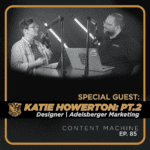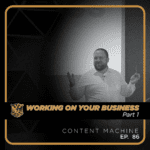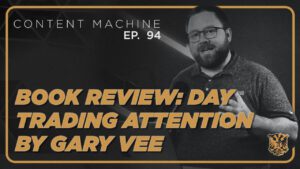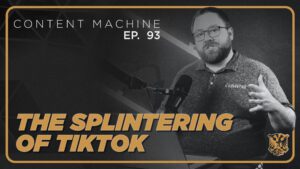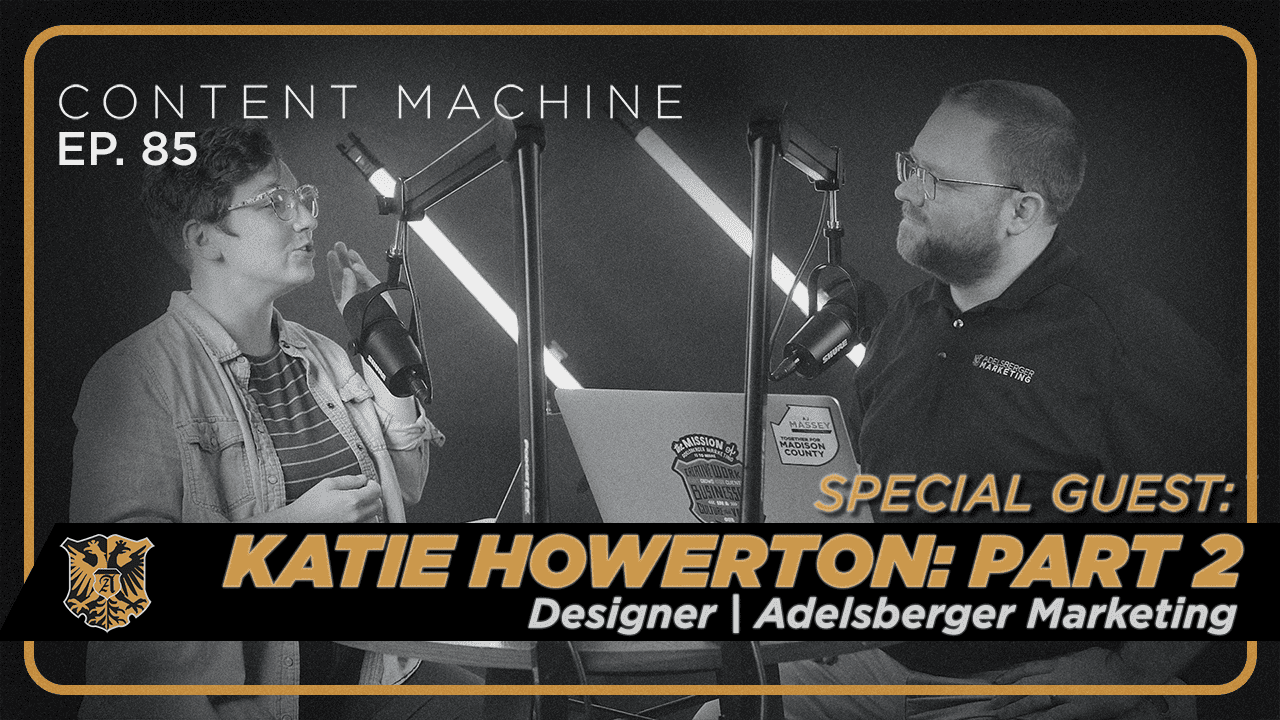
Welcome to the second of two episodes with Katie Howerton, where we talk about type. And so you’re saying that in a good brand kit, so if someone’s listening to this podcast and they’ve got a brand kit from a professional, there should be a font listing in there.
Yes. And they’re ideally multiple. I think in my mind, an ideal set is three fonts. So one being your main title font, which you could use a variation of later, a subtitle font and then a body copy. And you can use those within the same family. I like a little variation. So say you have sans serif as your main title font, try to use a serif or a slap serif to offset things in the body. So yeah, and then in addition to that, you should be getting with your brand kits if they do require downloaded fonts as font files as well, which is an easy step to miss because there’s no one rule for fonts across on the internet. Maybe one day we will have that, but yeah. Yeah.
And now you are somewhat famous for your handwriting, your handwritten script and stuff. So how can using unique type or handwritten script add meaning to a project?
I think something we talked about a lot in college when we were learning about typography is that every font has a voice, which sounds like no child left behind. What I mean is that when you see letters in a certain way, you imagine them sounding a certain way or feeling a certain way. It’s why most of our clients, male clients, if I present any script, they’re like, it feels a little girly. It’s a little overcompensating, but it’s true. There are different… It’s like if you’re doing an old brand and you’re using all very modern type, it’s going to feel disjointed. So often I will use hand lettering when it comes to any brand that is okay with as far as either something that’s playful, something that is very personal, or if you just hit a wall with something. So I think about even our own brand. We have a strong look with using Gotham and using our body copy type. But I like to do quotes in hand lettering so that they have a more illustrative element. They can be one on their own. They don’t have to match everything. And as long as the color palette carries over, that there’s a consistency with elements like that, you can have a little bit more fun. So that’s why I like to use it specifically with quotes, because those are heard.
Yeah, you’re reading it to hear it like someone said it. Yeah, absolutely. All right. And then the last thing to talk about is, sometimes we have a conflict about software in our office, and usually that’s because you are obsessed about InDesign. I feel like InDesign is the… The… The… The…
The black sheep.
The black sheep of the Adobe world that nobody talks about. But you love it.
I do love it.
So I wanted to give you a chance to pitch Adobe and defend your choice to use it all the time.
So, Adobe has many, many products, the three main which are used by designers are Photoshop, Illustrator, and Indesign. Photoshop for images, Illustrator for logos, is the best way to put it, and then Indesign for print. I ran our Jackson home for five years, and that was what I designed every magazine in. It’s what I’ve designed resumes in. It’s what I’ve designed anything that is going to be printed in because it is made for that. And so if you learn the muscle memory of it, which is like any Adobe product, if you get used to it, you don’t want to-
Yeah, because the key commands don’t transfer between different software.
Exactly. So it’s just very print friendly. But even with that, I’ll sometimes use it for non-print or things that just don’t necessarily need Indesign, per se. There’s a lot more locking features on there. I can envision it better, I think. In Illustrator, it’s a little bit more of the Wild West of you can have things spread out, less organization. I think I’m just mostly an organized person, and I have found a system within Illustrator that benefits that. I can also design two things back to back and pick a favorite, and for me, it’s visually easier. So I would say the Indesign is really helpful for print materials or anything with lots of words. It’s very type-centric. So I would encourage anybody, if you’re creating a business card, if you’re creating print materials, even if you’re laying out for a website, just to play around with the idea of what are the margins? How are we doing this? Indesign is a good place to start.
Well, Katie, thank you so much for joining us today and teaching us a little bit more about type and making a case for InDesign.
Yeah, anytime.
If you have a favorite type project that you’ve seen Katie make, which are all the quotes from this show that you see on social media, please let us know, and I’ll share that with Katie so she can hear nice things about her work. So thank you for listening to the Content Machine podcast. Stay tuned for future episodes about marketing, small business, and leadership in culture. Thank you.

